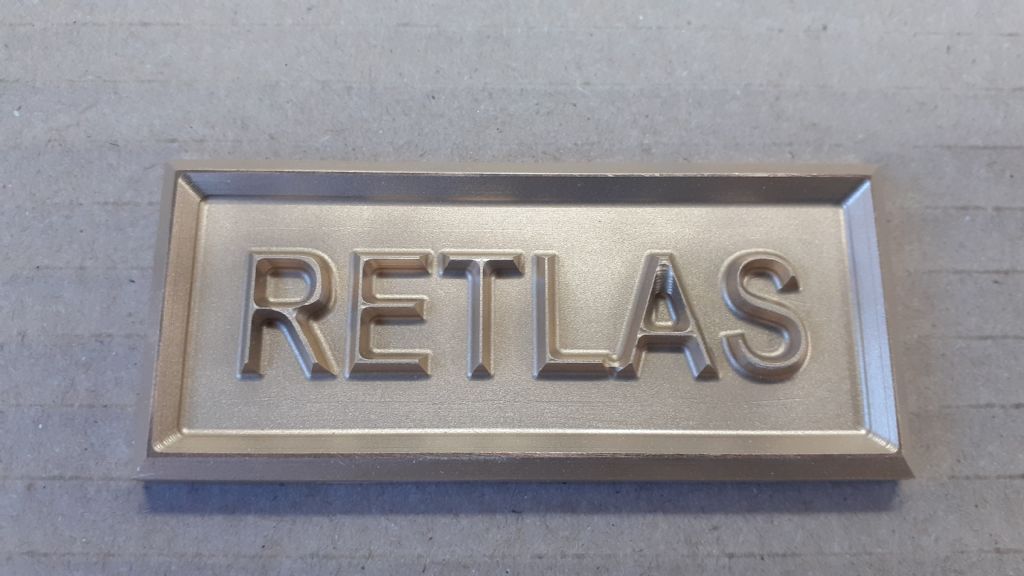Guys
I have coded a name plate for my Wyvern using DXF (for outline) to CAMBAM (for text) and G-Code from CamBam with 99,000 lines into MACH3 and a KX1 mill. Machining with a 0.3 V cutter. Dedicated computer running XP with no AV or any attachments (as per MACH3 instructions), 2Gb of ram.
I have machined 2 small plates having about 50,000 lines and they were OK.
Each time I machine the larger plate I get a cut though the Wyvern and also through Westbury. Initially the cutter path on MACH3 does not show these unwanted cuts. I have made these plates twice and the unwanted cuts occurs on the 3rd pass and in the same position on each plate.
Possible explanation could be memory/disc data transport issue. I could try another computer but it needs a parallel port and a lot of hassle setting up.
Have any of you experience this type of error - do you have any suggestions? I would like to keep with MACH3 and Linux is a no-no!
Many thanks
Mike

I have coded a name plate for my Wyvern using DXF (for outline) to CAMBAM (for text) and G-Code from CamBam with 99,000 lines into MACH3 and a KX1 mill. Machining with a 0.3 V cutter. Dedicated computer running XP with no AV or any attachments (as per MACH3 instructions), 2Gb of ram.
I have machined 2 small plates having about 50,000 lines and they were OK.
Each time I machine the larger plate I get a cut though the Wyvern and also through Westbury. Initially the cutter path on MACH3 does not show these unwanted cuts. I have made these plates twice and the unwanted cuts occurs on the 3rd pass and in the same position on each plate.
Possible explanation could be memory/disc data transport issue. I could try another computer but it needs a parallel port and a lot of hassle setting up.
Have any of you experience this type of error - do you have any suggestions? I would like to keep with MACH3 and Linux is a no-no!
Many thanks
Mike













